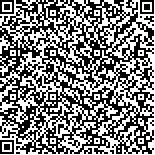| 引用本文: | 李建勋,李鑫,谢康,徐德晨,李杰.新型冠状病毒序列变异时空分析系统的设计与实现[J].生物信息学,2020,18(2):86-95. |
| LI Jianxun,LI Xin,XIE Kang,XU Dechen,LI Jie.Design and implementation of SARS-CoV-2 variation spatio-temporal analysis system[J].Chinese Journal of Bioinformatics,2020,18(2):86-95. |
|
| 摘要: |
| 新型冠状病毒肺炎目前已进入全球大流行状态,多个国家出现疫情爆发。美国疾病管制局期刊《新兴传染病》发表的关于新型冠状病毒的最新研究结论显示,新型冠状病毒基本传染数R0的中位数高达5.7,这意味着在未来较长时间内新型冠状病毒可能会在人群中持续传播并发生变异。在这一背景下,如何监视病毒的变异,对于冠状病毒的研究和药物研发具有重要意义。本文基于来自GISAID的病毒基因组序列数据,设计和实现了新型冠状病毒变异时空分析系统。该系统可对来自不同国家和地区的新型冠状病毒序列数进行统计,对病毒序列在不同时间、不同空间内的变异情况进行分析和可视化,同时还支持不同序列之间的差异比对。该系统可为新型冠状病毒肺炎的研究和政府的疾病控制机构的决策提供支持。 |
| 关键词: 新型冠状病毒 新型冠状病毒肺炎 时空变异分析 |
| DOI:10.12113/202004008 |
| 分类号:341 |
| 文献标识码:A |
| 基金项目:国家精准医学研究重点研发专项(No.2016YFC905);哈尔滨工业大学新型冠状病毒肺炎疫情应急科研攻关项目. |
|
| Design and implementation of SARS-CoV-2 variation spatio-temporal analysis system |
|
LI Jianxun, LI Xin, XIE Kang, XU Dechen, LI Jie
|
|
(Bioinformatics Research Center, School of Computer Science and Technology, Harbin Institute of Technology,Harbin 150001,China)
|
| Abstract: |
| Coronavirus disease 2019 (COVID-19) has now entered a global pandemic state, and outbreaks have occurred in many countries. The latest research findings on the new crown published by the US Centers for Disease Control and Prevention (US CDC) journal “Emerging Infectious Diseases” show that the median number of SARS-Cov-2s basic reproduction number is as high as 5.7, which means that COVID-19 may be among the population in the future and continue to spread and mutate. How to monitor the variation of the virus is of great significance for the research of coronavirus and drug development. In this paper, based on the virus sequence data from GISAID, we designed and implemented a SARS-CoV-2 variationspatio-temporal analysis system. The system can count the number of SARS-CoV-2 sequences from different countries and regions, analyze and visualize the variation of virus sequences at different times and in different spaces, and also supports the alignment of different virus sequences. The system provides support for the research of COVID-19 and the decision-making of government disease control agencies. |
| Key words: SARS-CoV-2 COVID-19 Spatio-temporal variation analysis |






